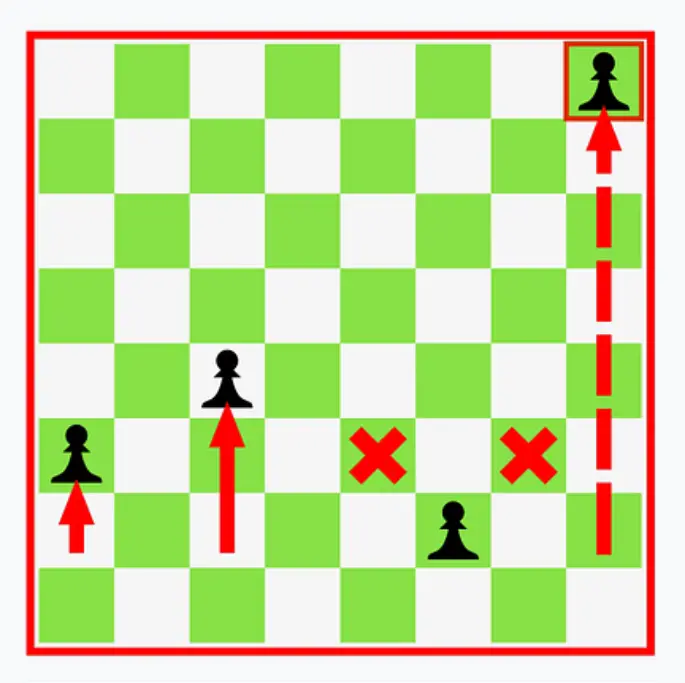Pawns have a special move that is different from how they usually move. First, we’ll review how a pawn normally moves.
If you’re already familiar with this, skip the next section and go right to the special move, below.
How Does a Pawn Move?
A pawn moves 1 square forward at a time. The only time this changes is on a pawn’s very first move, where you have the option of moving it 1 or 2 squares forward.
While pawns move straight ahead, they don’t attack straight ahead. Pawns can only capture 1 square diagonally forward to either side. Here’s a visual on pawn movement:

Special Pawn Move In Chess
A pawn is capable of a special capture called en passant. This is when a pawn captures an enemy pawn that is right beside it, rather than 1 square diagonally in front of it.
However, it can only be done in one situation. To capture like this:
- Your pawn must be 3 rows away from your opponent’s back row
- Your opponent’s pawn must have moved 2 squares, landing next to your pawn on their last move.
Here’s what it looks like:

First board: The black pawn is 3 rows away from white’s back row. The white pawn moves 2 squares on its first move, landing next to the black pawn. Second board: The black pawn attacks diagonally forward (like always), but it attacks the square behind the white pawn, capturing it. Notice that the capture works as if the white pawn moved only 1 square instead of 2.
To capture like this, it must be done immediately (on the next move) after the other pawn moves 2 squares off its home square, as the white pawn did above. If black moves another piece first, the en passant capture isn’t allowed. If the home pawn moves 1 square ahead, then another square ahead on the next move, this capture also isn’t allowed.
Check out the en passant FAQ for more information.